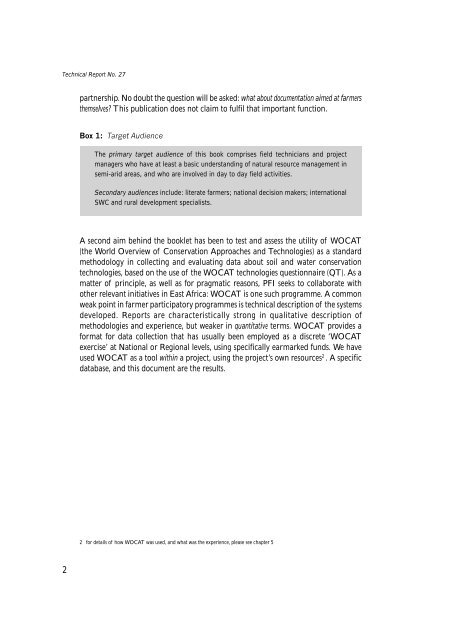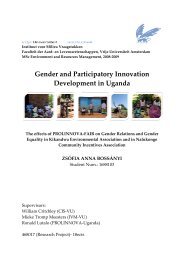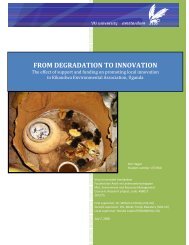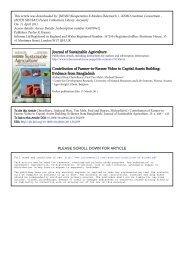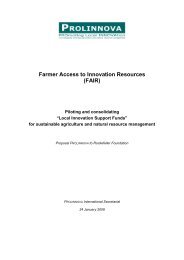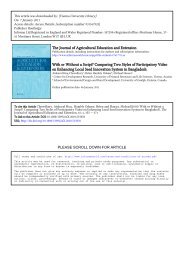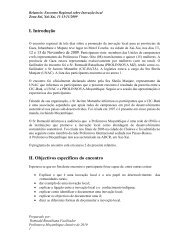Farmers' initiatives in land husbandry: promising ... - Prolinnova
Farmers' initiatives in land husbandry: promising ... - Prolinnova
Farmers' initiatives in land husbandry: promising ... - Prolinnova
Create successful ePaper yourself
Turn your PDF publications into a flip-book with our unique Google optimized e-Paper software.
Technical Report No. 27<br />
partnership. No doubt the question will be asked: what about documentation aimed at farmers<br />
themselves? This publication does not claim to fulfil that important function.<br />
Box 1: Target Audience<br />
The primary target audience of this book comprises field technicians and project<br />
managers who have at least a basic understand<strong>in</strong>g of natural resource management <strong>in</strong><br />
semi-arid areas, and who are <strong>in</strong>volved <strong>in</strong> day to day field activities.<br />
Secondary audiences <strong>in</strong>clude: literate farmers; national decision makers; <strong>in</strong>ternational<br />
SWC and rural development specialists.<br />
A second aim beh<strong>in</strong>d the booklet has been to test and assess the utility of WOCAT<br />
(the World Overview of Conservation Approaches and Technologies) as a standard<br />
methodology <strong>in</strong> collect<strong>in</strong>g and evaluat<strong>in</strong>g data about soil and water conservation<br />
technologies, based on the use of the WOCAT technologies questionnaire (QT). As a<br />
matter of pr<strong>in</strong>ciple, as well as for pragmatic reasons, PFI seeks to collaborate with<br />
other relevant <strong><strong>in</strong>itiatives</strong> <strong>in</strong> East Africa: WOCAT is one such programme. A common<br />
weak po<strong>in</strong>t <strong>in</strong> farmer participatory programmes is technical description of the systems<br />
developed. Reports are characteristically strong <strong>in</strong> qualitative description of<br />
methodologies and experience, but weaker <strong>in</strong> quantitative terms. WOCAT provides a<br />
format for data collection that has usually been employed as a discrete ‘WOCAT<br />
exercise’ at National or Regional levels, us<strong>in</strong>g specifically earmarked funds. We have<br />
used WOCAT as a tool with<strong>in</strong> a project, us<strong>in</strong>g the project’s own resources 2 . A specific<br />
database, and this document are the results.<br />
2 for details of how WOCAT was used, and what was the experience, please see chapter 5<br />
2


